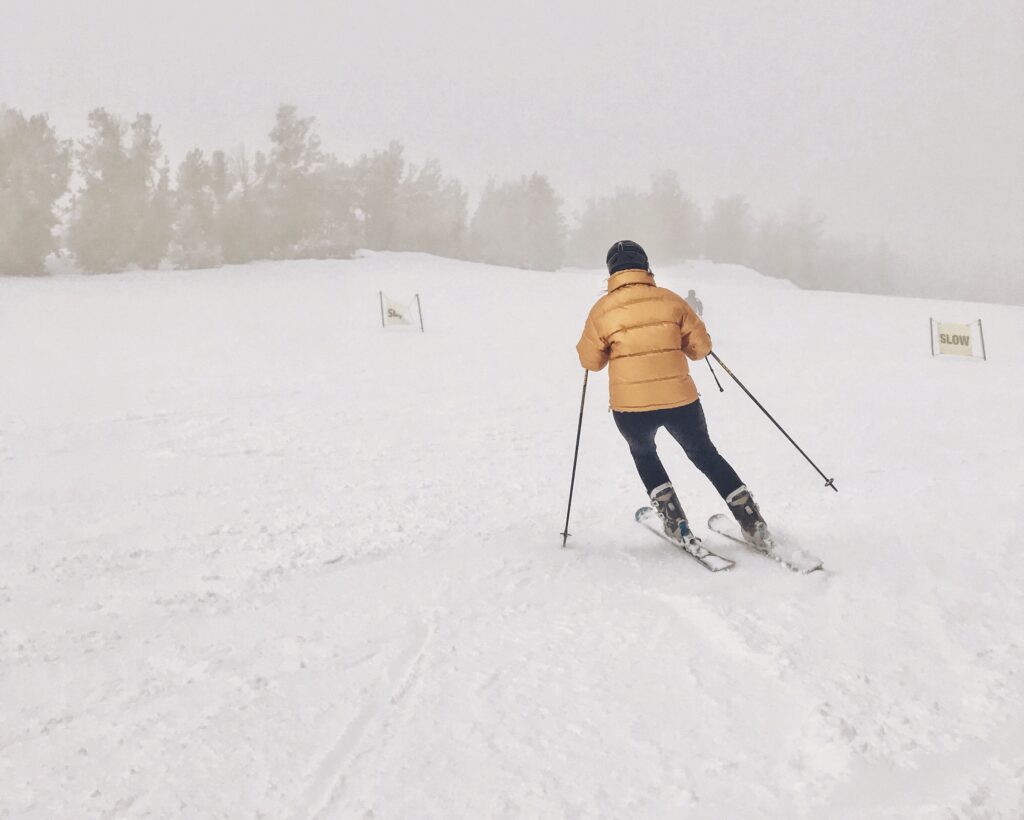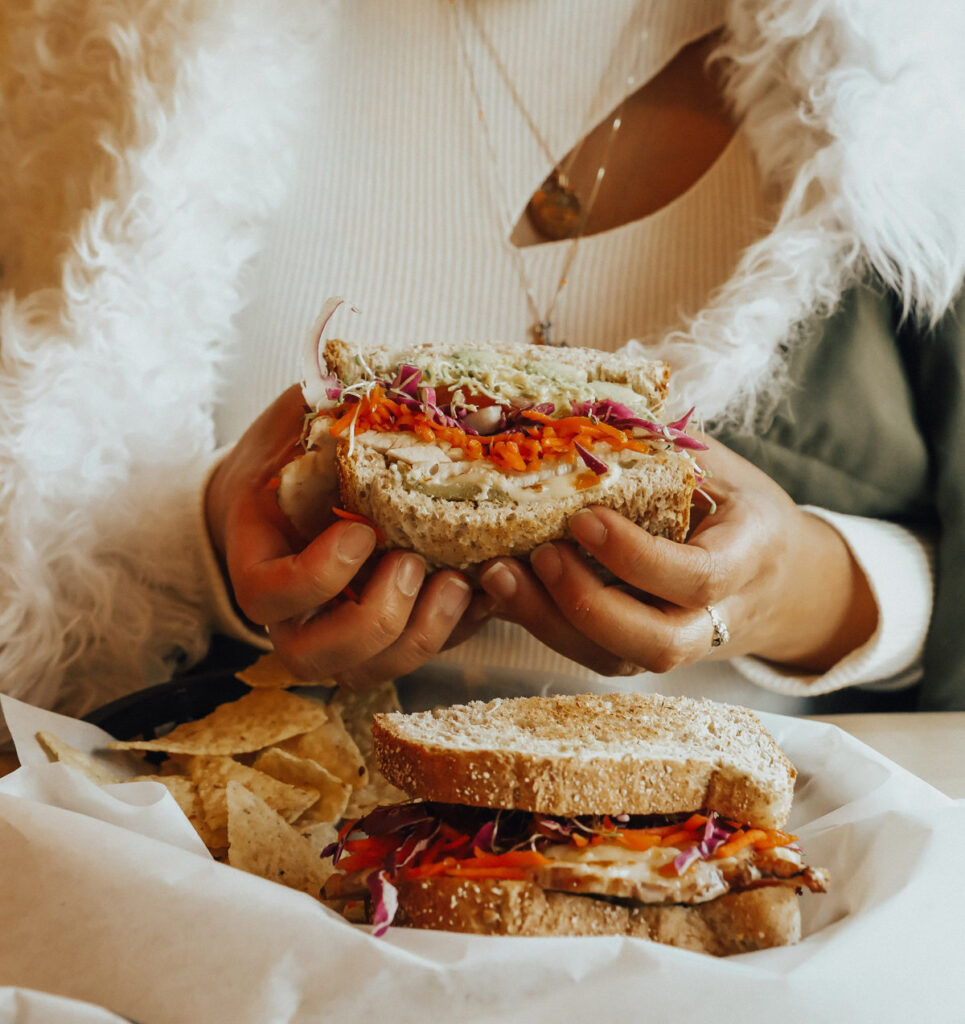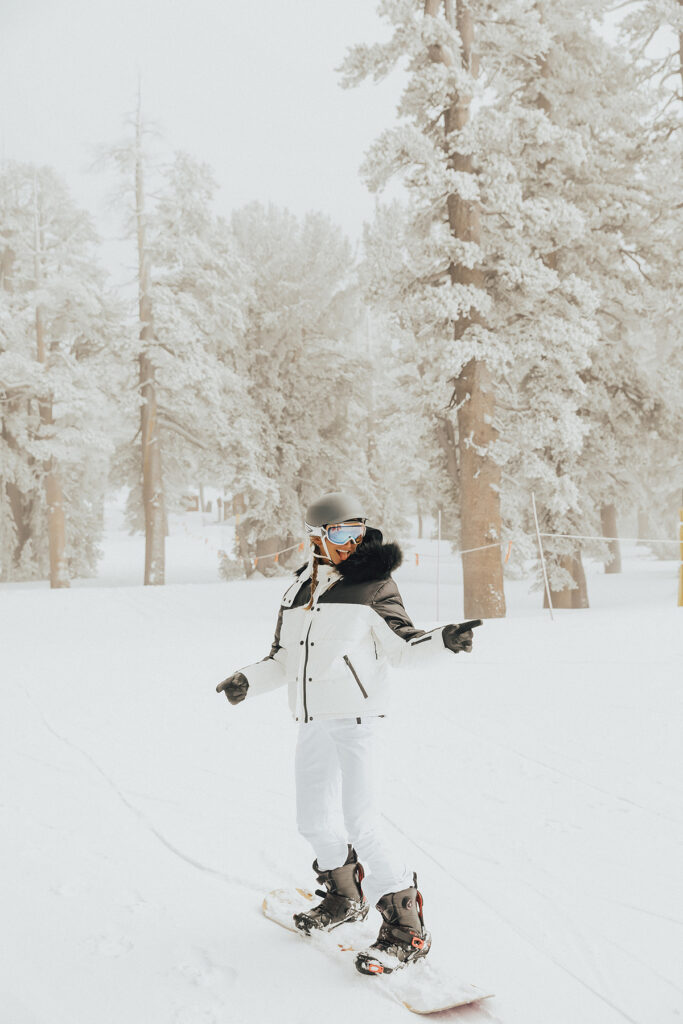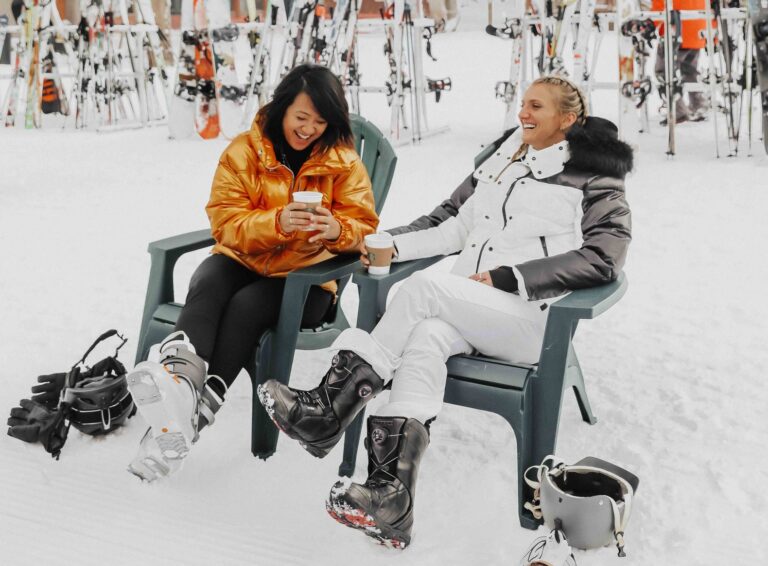With ski and snowboard season upon us, it seemed only right to explore exactly what type of workout a day on the slopes delivers! Here we delve into that question and share information on calories burned, what to eat and how to get the most out of your next snow day.
Type of workout
- Cardio (mostly) – Downhill skiing/snowboarding (DS/S) is predominantly a cardiovascular workout, with some core and lower body muscle engagement.
- Moderate to vigorous exertion – The intensity of a ski workout is dependent on your level of expertise, with beginners and experts achieving the most vigorous levels of exertion. Novice skiers and snowboarders fall more, meaning they do a lot of push-up like movements, engage more muscles and exert more effort to maintain balance and keep an appropriate speed. On the other end of the spectrum, expert skiers and snowboarders also get a great workout when they opt for advanced terrain, such a moguls and ungroomed tree runs. The constant jumping, cutting turns and maintaining balance at high speeds is a surefire way to elevate the heart rate.

Calories burned per hour
- 300-500 calories burned for 1 hour of continuous DS/S is the average range cited here
- Important to account for time spent waiting – In reality, we always have inactive moments while in the lift line, or riding the chair up. Accordingly, I use that 350-500 number for 90 minutes on the hill.
- Up to 1,200 – 2,000 burned for a full day – This range is what to roughly expect if you spend a full day on the mountain (approximately 6 hours on the hill + 1 hour lunch and miscellaneous bathroom breaks). I arrived at this range and accommodated for inactive waiting time by using .66 (60 minutes / 90 minutes) of the hourly calories burned cited. Below is the formula I used, which you can adapt for your specific day and find a precise calorie count based on your weight here:
- daily burn = calories burned hourly (hours on hill*.66)
- Use fitness tracker for greatest accuracy – As with all forms of exercise, calories burned is specific to the individual and based on factors like height, weight, heart rate and age. The best way to track calories burned while DS/S is with a fitness tracker that knows your personal metrics and tracks heart rate.
Muscles working / where you’ll feel it
In order of magnitude:
- Upper legs – inner and outer thighs, hamstrings, quads…AKA the entire upper leg is really working to keep your hips and knees secure.
- Butt -DS/S is great for your glutes because so many of the movements are done with your body weight in your heels and in a squat position.
- Core – The entire time you are balancing, it’s engaged! The more you activate your abdominal muscles, the more control and precision you’ll have in your turns and form. Try it next time!

What to eat on a ski day
- Morning & lunch: complex carbs, light protein and fats. Carbs like fruit and whole grains can be quickly broken down and used for fuel. For breakfast, I love a simple bowl of oatmeal with bananas, almonds and maple syrup. Lunch is a turkey sandwich with carrots and a piece of fruit. A moderate amount of fats in your earlier meals is good, but don’t overdo it because digesting them will take blood flow away from your muscles and extremities, which you don’t want on a cold mountain slope.
- Post ski snack & dinner: fats, high protein and vegetables. Once the day’s work is done you want to focus on filling up with liquids, protein and vegetables. I love hearty soups with an enormous side salad after long ski days.
Important reminders
- Stretch beforehand – The more nimble your body, the less likely you are to get injured.
- Stay hydrated – We love camelbaks for this purpose. When temperatures are below 32° F, remember to blow the water out of the drinking hose and back into the pack so it doesn’t freeze and prevent you from being able to drink.
- Protect your skin from the elements – Specifically:
- Moisturize morning and night, this is my current favorite.
- Wear waterproof sunscreen and carry chapstick in your pocket.
- For sensitive skin or during a big storm, wear a full face mask to protect against harsh winds and cold.
- Quality gear makes all the difference – To stay warm, happy and out skiing longer, invest in good gear.


